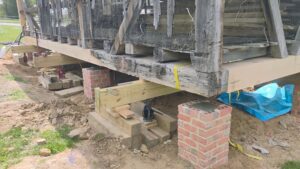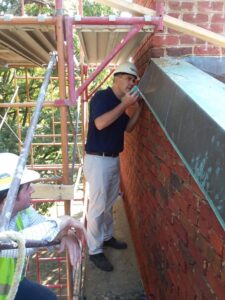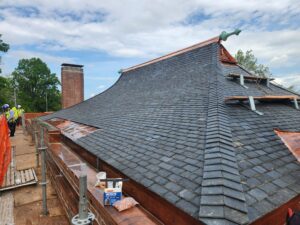ARCHITECTURE DEGREE = POWERFUL AND FLEXIBLE TOOL
As a child I was fascinated with buildings; more specifically, old buildings that had seen better days. The 19th century mill buildings of New England captivated me. Before I understood what was involved, I wanted to bring back the dignity of these magnificent structures. I was certain that I wanted to be involved, but I was not sure how to achieve this goal, and I eventually dismissed it as impractical.
What I later (a bachelor’s degree and a few years in the software industry) discovered is that work occupies an enormous amount of our time and that real impracticality lies in attempting to put aside passions for 40 hours a week. All work comes with a measure of frustration, but if the broad outlines of your work align with your interests, your work life is likely to be more productive and certainly be more enjoyable.
I took a circuitous route to my degree in architecture. Once I decided that I wanted to design and restore buildings, I sought a deep understanding of the subject of architecture and historic construction.

- I enrolled in a program in preservation carpentry in Boston. For two years I was trained in many aspects of preservation trades. With my diploma in hand, I spent several years working as a carpenter for preservation contractors.
- I successfully completed the architecture program at the University of Maryland. I then worked to obtain my license to practice architecture with my accredited Master of Architecture, gaining experience through the Architecture Experience Program (AXP) and passing the Architectural Registration Exam (ARE). I worked under the supervision of a licensed architect during this time. This experience allowed me to immerse myself in the process and business of architecture and put into practice the systematic practices of the architectural design process.
- While I was pursuing my architecture degree and license I maintained my connection to historic preservation by volunteering as a Historic Preservation Commissioner in my local county. This experience was an invaluable education in historic preservation processes and regulations.

Architectural education encompasses a wide range of skills.
Architectural education encompasses a wide range of skills. I found that my fellow students were strong in some areas and weaker in others. I was in awe of the drawing capabilities of some students, while I was stronger at the technical end of the curriculum. The willingness to learn and continue learning is probably the most important trait that you can bring. Together we students helped and accepted help when necessary. Architecture school is difficult, but the community aspect of my education was enormous, and I will always be grateful to my classmates.
My current situation takes the many disparate pieces of my journey and brings them all into play. I work for a county agency caring for a large number of historic structures. I am effectively the homeowner for over 100 historic buildings dating from 1740 to 1940. As part of a small team, I am tasked with restoring and maintaining these sites.

I have specialized knowledge in preservation trades and regulations, but without my design education and experience my job would be much more difficult.
- I can make decisions with a firm understanding of the methods of construction, structure, code compliance, accessibility, and historic regulations. This understanding has its roots in both my design education and the Architectural Experience Program.
- The careful, systematic processes of architecture have informed the way that I organize projects. We form general scopes of work, (schematic design) employ experts to give us a clear understanding of the requirements (design development), solicit bids based on accurate realistic scopes of work, and finally move into construction administration (bidding and construction administration).
- I consistently transmit complex information to contractors or end users. The universal language is visual communication. Team members of differing levels of experience can understand lucid, clear drawings and diagrams. I rarely produce a full set of construction drawings now, but with hand drawing, photographs, and CAD, I am regularly stitching images and data for contractors or end users.
- My design education has enabled me to see that construction drawings form a narrative and must communicate intent. The quick diagrams and sketches that I employ daily are constructed to convey complex information as efficiently as possible.

My tale is certainly not indicative of a typical path but perhaps illustrates that an architecture degree is a powerful and flexible tool. Projects of any type can be aided by the systematic (and critical) ways that we as architects are taught to work. We observe conditions, evaluate opportunities and constraints, and communicate our design intent.
F. Brian Carroll, AIA, Historical Asset Project Coordinator
Maryland-National Capital Park and Planning Commission
Master of Architecture / Master of Community Planning – University of Maryland
Certificate in Urban Design
